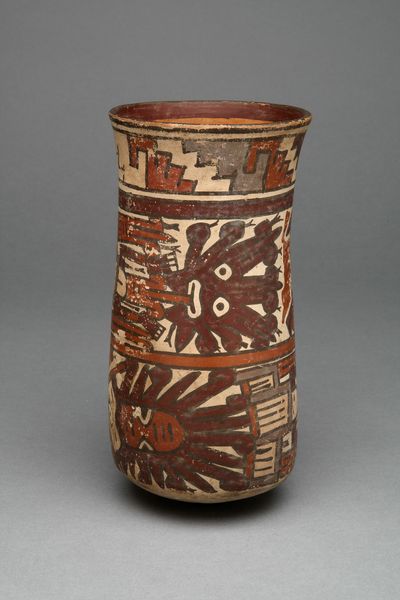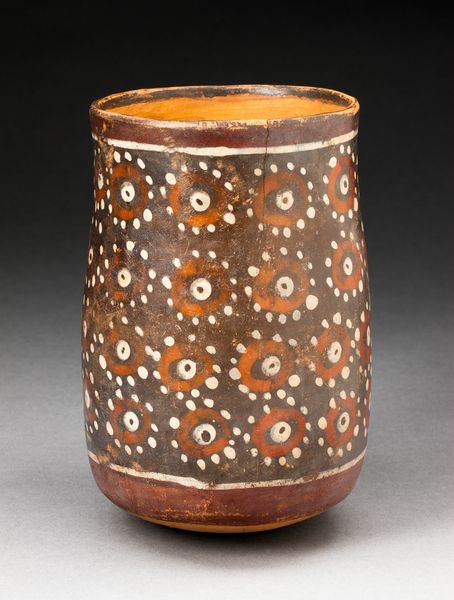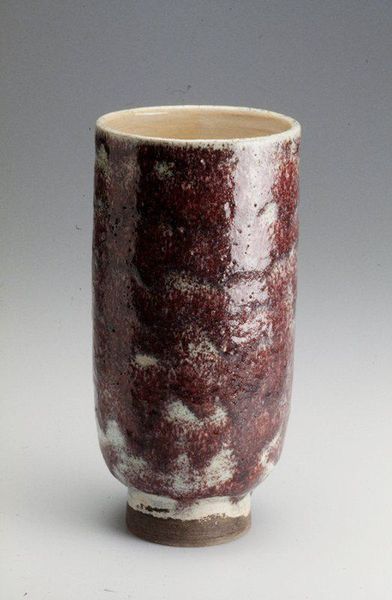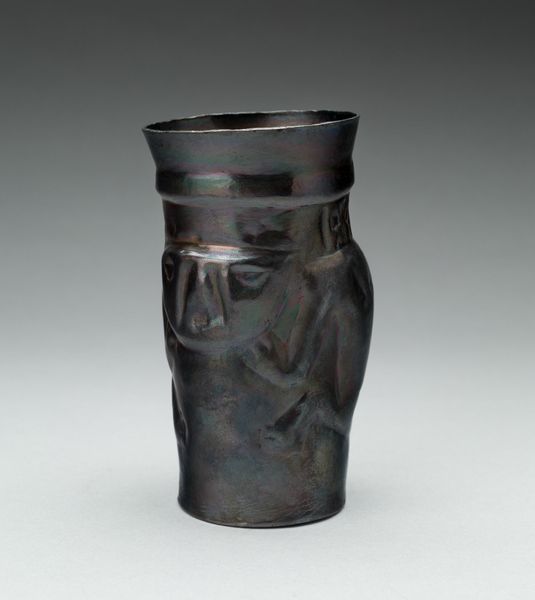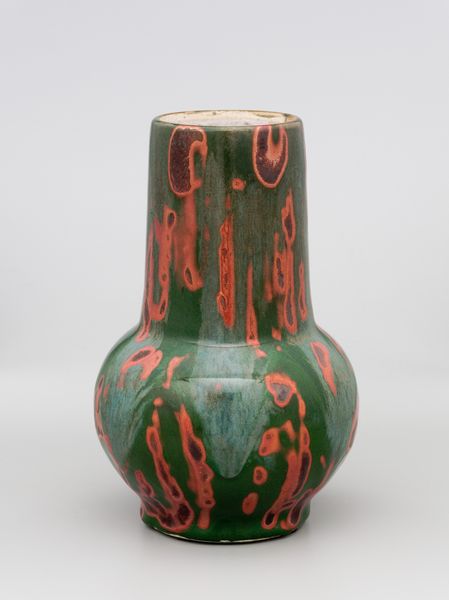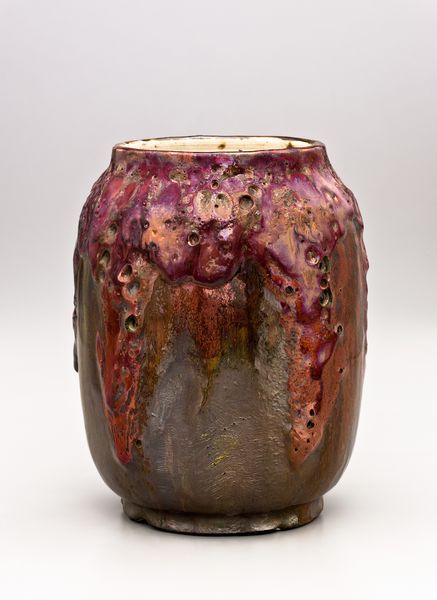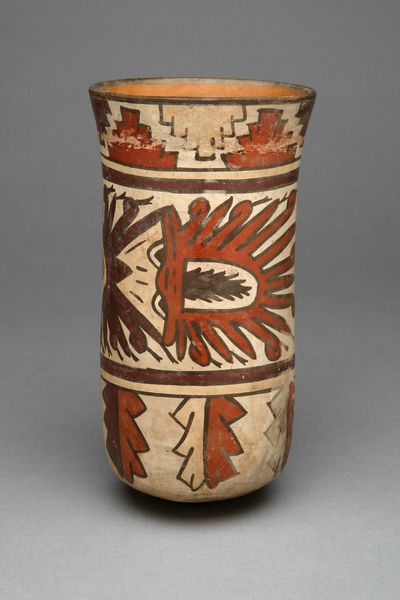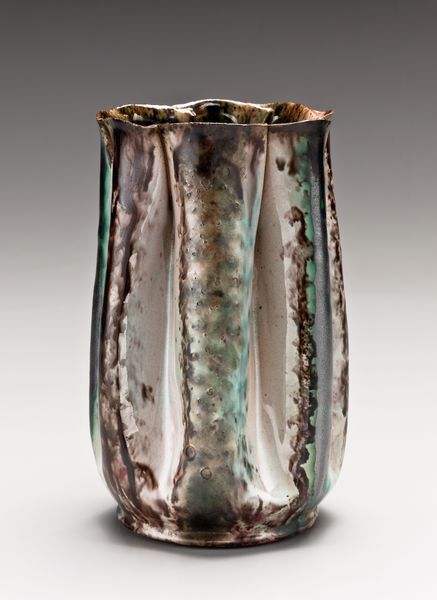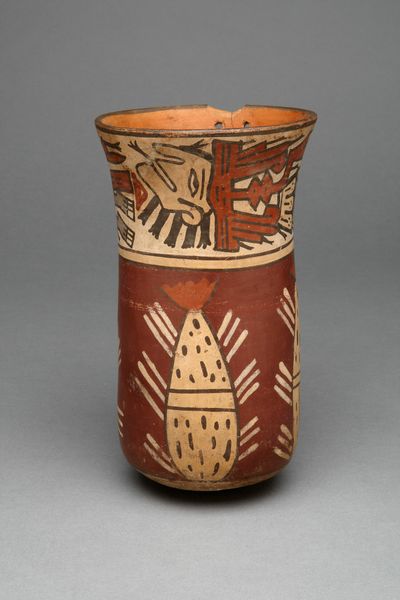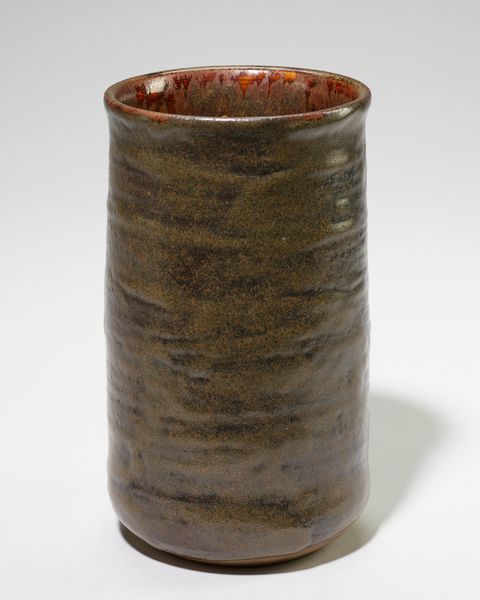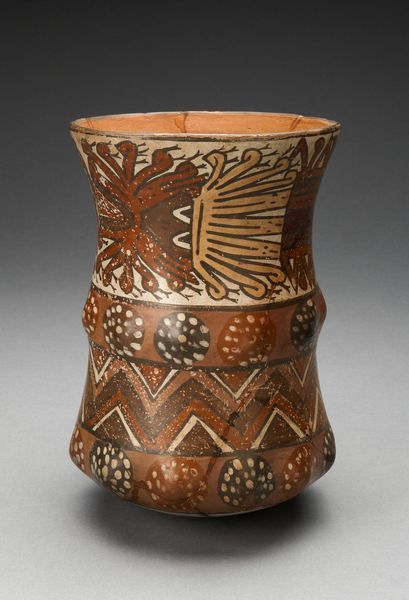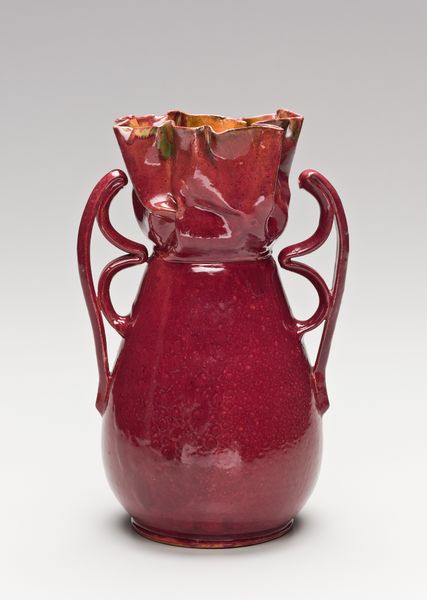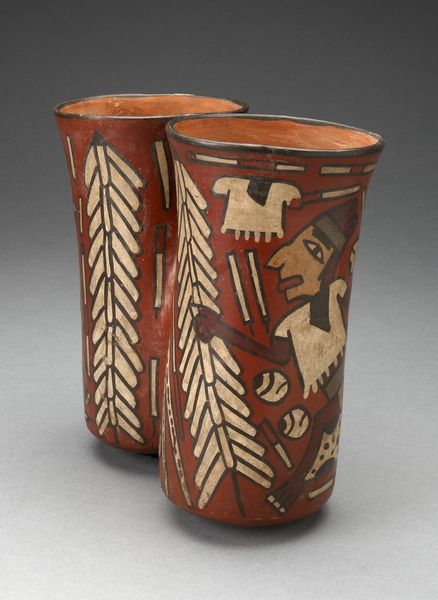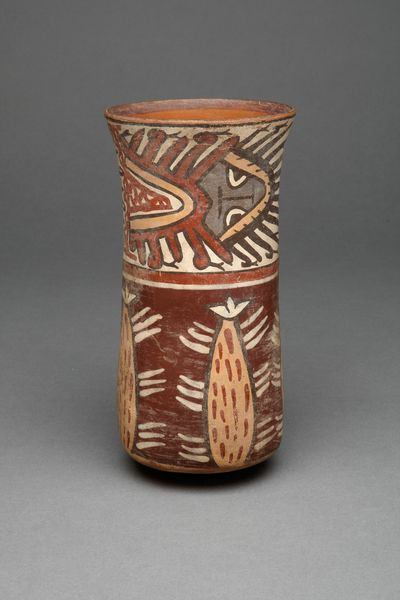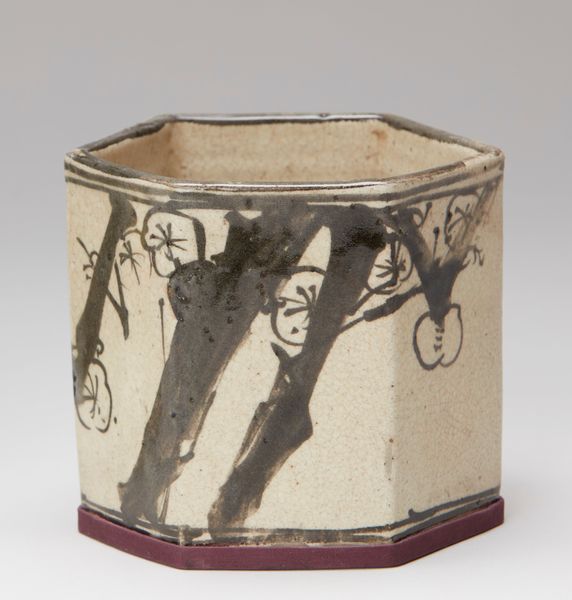
ceramic
#
ceramic
#
vase
#
stoneware
#
geometric
#
ceramic
#
abstraction
Copyright: No Known Copyright
Curator: Looking at this ceramic vase, I’m immediately struck by its boldness. It’s almost aggressive with the high contrast of its dripping glaze. Editor: And it should. We're standing in front of a work crafted around 1929, a ceramic stoneware vase by Hermann Broxner currently held in the collection of the Minneapolis Institute of Art. It's interesting to think about how the social currents of that era might have impacted such a piece. Curator: Exactly, think about what geometric abstraction was trying to do—disrupt traditional notions of beauty. But still there’s something…primal here. The colours alone are intense, conjuring the earth but disrupted by stark black. There’s the visual memory of volcanic landscapes. The glaze is deliberate and dramatic. Do you see an interplay between controlled form and chaotic process? Editor: Definitely. There's a tension, a visual struggle between the ordered geometric vessel and the uncontrolled flow of the glaze. It feels like an attempt to capture raw, untamed nature. The dual-toned glazing creates a distinct juxtaposition. There is almost a symbolic divide on the vase itself, not just in terms of aesthetics, but suggesting at the time period of the making of the piece a dichotomy between opposing ideologies and values. Curator: And those unusual handles, they look more like mechanical appendages than purely decorative features. Their shape is less about grace and more about, well, perhaps something functional adapted to non-function. Are they trying to evoke industrial elements of the time? The early twentieth century experienced a rapid industrial growth and these could be small attempts to insert those ideals in traditionally non-industrial artwork. Editor: Precisely. They’re almost a declaration. These are echoes of cultural anxiety that the mechanization of everything may affect art itself. Curator: It definitely brings a compelling narrative. Looking closer has truly enriched our perspectives on it. Editor: I agree. It's a powerful statement on the era.
Comments
minneapolisinstituteofart almost 2 years ago
⋮
Hermann Broxner studied at the Munich Academy and the Vienna School of Applied Arts before working as a sculptor and ceramist in Munich. His sculptural work focused on figures of women and animals, while his vessels were simple thrown forms decorated with applied geometric handles and flowing boldly colored glazes.
Join the conversation
Join millions of artists and users on Artera today and experience the ultimate creative platform.
